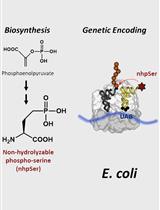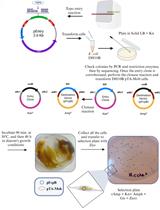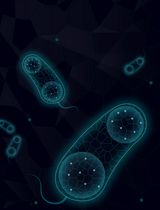- EN - English
- CN - 中文
Bacterial Adhesion Kinetics in a High Throughput Setting in Seconds-minutes Time Resolution
高通量条件下细菌粘附动力学(Seconds-minutes时间分辨率)
发布: 2021年01月20日第11卷第2期 DOI: 10.21769/BioProtoc.3844 浏览次数: 2687
评审: Amit Kumar DeyAnonymous reviewer(s)
Abstract
Bacterial surface adhesion, the first step in many important processes including biofilm formation and tissue invasion, is a fast process that occurs on a time scale of seconds. Adhesion patterns tend to be stochastic and spatially heterogeneous, especially when bacteria are present in low population densities and at early stages of adhesion to the surface. Thus, in order to observe this process, a high degree of temporal resolution is needed across a large surface area in a way that allows several replicates to be monitored. Some of the current methods used to measure bacterial adhesion include microscopy, staining-based microtiter assays, spectroscopy, and PCR. Each of these methods has advantages in assaying aspects of bacterial surface adhesion, but none can capture all features of the process. In the protocol presented here, adapted from Shteindel et al., 2019, fluorescently-labeled bacteria are monitored in a multi-titer setting using a standard plate fluorimeter and a dye that absorbs light in the fluorophore excitation and emission wavelengths. The advantage of using this dye is that it restricts the depth of the optic layer to the few microns adjacent to the bottom of the microtiter well, eliminating fluorescence originating from unattached bacteria. Another advantage of this method is that this setting does not require any preparatory steps, which enables reading of the sample to be repeated or continuous. The use of a standard multi-titer well allows easy manipulation and provides flexibility in experimental design.
Keywords: Bacterial adhesion (细菌黏附)Background
Bacterial adhesion is the first step of many important processes such as pathogen tissue invasion, symbiont recruitment and biofilm formation. Adhesion is a dynamic process, changing on a time scale of seconds (Fletcher, 1977; Vadillo-Rodríguez et al., 2004), therefore continuous, kinetic measurements are needed to study these events. Sampling a large surface area is also helpful, as adhesion tends to be heterogeneous and stochastic at a microscopic scale. In addition to having an assay that can make kinetic measurements, it is desirable to have an assay that is simple, cost-effective, and high throughput because it makes it possible to have multiple replicates and to test a wide range of experimental parameters.
While many methods for the measurement of adhesion have been reported - each one with advantages and disadvantages - none of the methods capture every aspect of this dynamic process. Microscopy allows detailed and direct measurement of adhesion but the main drawback of microscopy is a small field size. As a result, sampling of many different fields is needed to obtain statistical validity but sampling in this way makes it difficult to get high resolution kinetic data. This contradiction is highlighted in early time points of adhesion kinetics, when the number of cells per surface unit is low, causing a large stochastic effect due to small sample sizes (Vadillo-Rodríguez et al., 2004). Another popular method for bacterial attachment measurement is using crystal violet dye in microtiter plates (O'Toole, 2011). While this method is high throughput and inexpensive, it does not allow repeated measurements, making kinetics complicated and unreliable. Furthermore, sample preparation is not fast which makes this assay inadequate for monitoring events that occur at seconds-minutes timescales. Nano plasmonics is an effective way to make real time, kinetic measurements without the need for fluorescent labeling, but this method is expensive and requires highly specialized equipment, fabrication capabilities and expertise (Funari et al., 2018, Abadian and Goluch, 2015). The protocol presented here uses fluorescent labeling and is able to provide real time, kinetic measurements of bacterial adhesion in different culture densities, salt concentrations and different surfaces, using a variety of bacterial species (Shteindel et al., 2019), as well as changes in bacterial adhesion behavior under the effect of quorum sensing signals and in the different bacterivores (in preparation). All graphics in this protocol are adapted from Shteindel et al., 2019.
Materials and Reagents
2 x 96 well plate, clear polystyrene, Flat bottom, untreated (JETbiofil, China, catalog number: TCP001096 )
1.5 ml plastic tube
LB agar plate, 300 μg/ml Carbenicillin
Eight channel pipetor reservoirs
Pseudomonas aeruginosa PAO1 with the pMRP9-1 plasmid (Carbenicillin resistance, constitutive GFPmut2) freezer stock
Di-ionized water
Allura red AC powder (Sigma, catalog number: 458848 )
Crystal violet powder (Sigma, catalog number: C6158-100G )
Acetic acid (Sigma, catalog number: 27225-500ML-R )
Allura red AC solution (see Recipes)
NaCl solution (see Recipes)
M9 medium (see Recipes)
Crystal violet (see Recipes)
Acetic acid 30% v/v (see Recipes)
Equipment
Shaker-incubator
Micro-centrifuge
Multichannel pipetor
Multimode plate reader (Synergy HT, Biotek, USA)
Software
Gen5 (platereader software)
Procedure
文章信息
版权信息
© 2021 The Authors; exclusive licensee Bio-protocol LLC.
如何引用
Shteindel, N. and Gerchman, Y. (2021). Bacterial Adhesion Kinetics in a High Throughput Setting in Seconds-minutes Time Resolution. Bio-protocol 11(2): e3844. DOI: 10.21769/BioProtoc.3844.
分类
微生物学 > 微生物生物膜
您对这篇实验方法有问题吗?
在此处发布您的问题,我们将邀请本文作者来回答。同时,我们会将您的问题发布到Bio-protocol Exchange,以便寻求社区成员的帮助。
Share
Bluesky
X
Copy link














